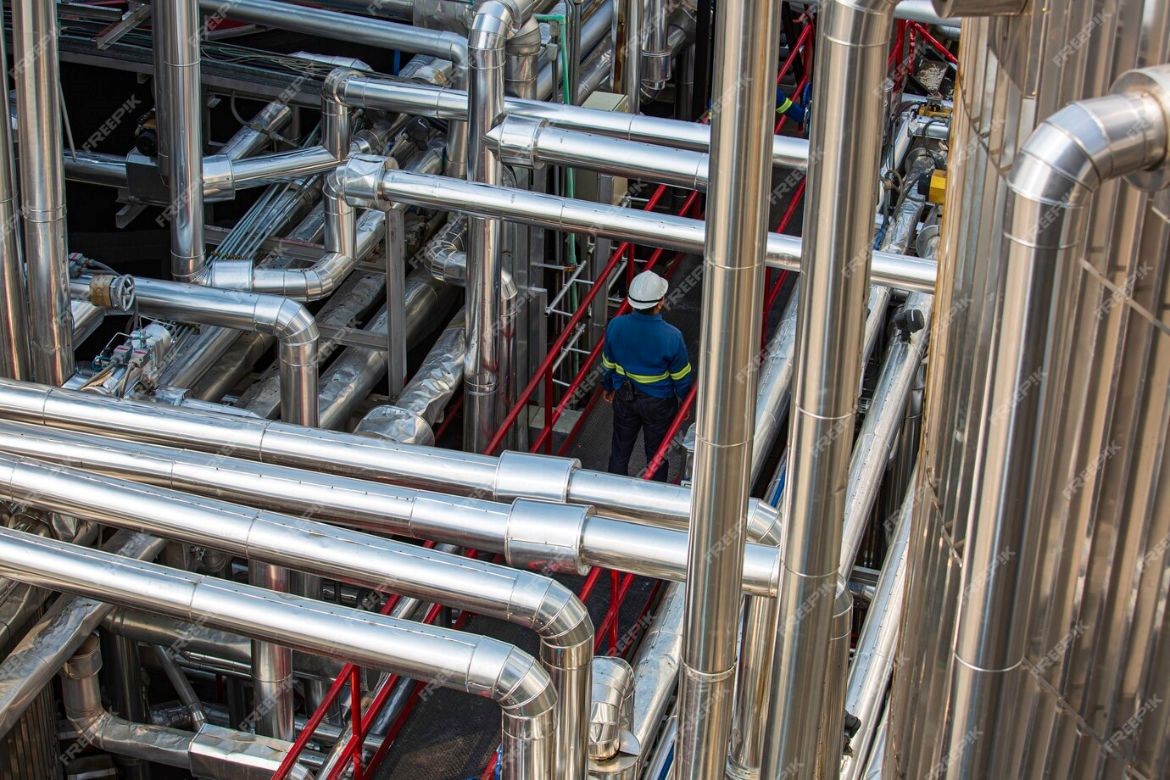The Role of Stainless Steel Tubing in High-Pressure Applications
In various industrial sectors, high-pressure applications demand materials that can withstand extreme conditions while maintaining integrity and performance. Stainless steel tubing, particularly high-pressure stainless steel tubing, has emerged as a crucial component in these demanding environments. This blog explores the role of stainless steel tubing in high-pressure applications, highlighting its benefits, applications, and why it is the preferred choice for industries requiring reliable and durable solutions.
Understanding High-Pressure Stainless Steel Tubing
High-pressure stainless steel tubing is designed to handle significant internal pressures without failing. This type of tubing is characterised by its high strength, corrosion resistance, and ability to perform under extreme temperatures and pressures. The manufacturing process involves precise control and quality assurance to ensure that the tubing can meet the rigorous demands of high-pressure applications.
Benefits of Stainless Steel Tubing in High-Pressure Applications
1. Exceptional Strength and Durability
Stainless steel tubing is renowned for its strength and durability. In high-pressure applications, these properties are paramount. The tubing must withstand not only the internal pressure but also any external forces that may act upon it. High-pressure stainless steel tubing is engineered to provide maximum strength, ensuring it can handle the stress and strain of demanding environments without compromising its structural integrity.
2. Corrosion Resistance
Corrosion is a major concern in high-pressure applications, especially in industries dealing with harsh chemicals, saltwater, or other corrosive substances. Stainless steel tubing offers excellent corrosion resistance, protecting the system from degradation over time. This resistance is due to the chromium content in stainless steel, which forms a passive layer of chromium oxide that prevents rust and corrosion. This makes stainless steel tubing ideal for use in environments where other materials would quickly fail.
3. Temperature Tolerance
High-pressure applications often involve extreme temperatures. Stainless steel tubing can maintain its strength and performance at both high and low temperatures, making it suitable for a wide range of applications. Whether dealing with cryogenic conditions or high-temperature steam, stainless steel tubing remains reliable, ensuring the safety and efficiency of the system.
4. Leak-Proof Performance
In high-pressure systems, even a small leak can lead to significant issues, including system failure, safety hazards, and costly downtime. High-pressure stainless steel tubing is designed to provide leak-proof performance. The seamless nature of the tubing, combined with precision manufacturing, ensures that there are no weak points where leaks can develop. This reliability is crucial for maintaining the integrity of high-pressure systems.
5. Low Maintenance
Stainless steel tubing requires minimal maintenance compared to other materials. Its durability and resistance to corrosion mean that it can perform effectively for long periods without the need for frequent inspections or repairs. This low maintenance requirement translates to lower operational costs and increased uptime for high-pressure systems.
Applications of High-Pressure Stainless Steel Tubing
1. Oil and Gas Industry
In the oil and gas industry, high-pressure stainless steel tubing is used extensively for drilling, extraction, and transportation processes. The tubing’s ability to withstand high pressures and corrosive environments makes it ideal for these applications. From subsea operations to onshore drilling rigs, stainless steel tubing plays a critical role in ensuring the safety and efficiency of oil and gas production.
2. Chemical Processing
Chemical processing plants handle a variety of corrosive and hazardous substances at high pressures. Stainless steel tubing is used in these facilities to transport chemicals safely and reliably. Its resistance to chemical attack and ability to maintain integrity under high pressure are essential for preventing leaks and ensuring the smooth operation of chemical processes.
3. Power Generation
Power generation facilities, including nuclear, thermal, and renewable energy plants, utilise high-pressure stainless steel tubing in various applications. For instance, steam lines and heat exchangers in thermal power plants rely on the tubing’s ability to withstand high temperatures and pressures. In nuclear power plants, the tubing’s reliability is crucial for maintaining safety standards.
4. Aerospace and Defence
The aerospace and defence industries require materials that can perform under extreme conditions, including high pressures and temperatures. Stainless steel tubing is used in aircraft hydraulic systems, fuel lines, and other critical components. Its high strength-to-weight ratio and reliability make it an ideal choice for these demanding applications.
5. Automotive Industry
In the automotive industry, high-pressure stainless steel tubing is used in fuel injection systems, brake lines, and hydraulic systems. The tubing’s durability and ability to withstand high pressures ensure the safety and performance of vehicles. As automotive technology advances, the demand for high-quality materials like stainless steel tubing continues to grow.
Why Choose High-Pressure Stainless Steel Tubing?
Versatility and Customisation
High-pressure stainless steel tubing is available in various sizes, grades, and configurations, allowing it to be tailored to specific application requirements. This versatility ensures that engineers and designers can find the right tubing solution for their needs, whether it’s for a large-scale industrial system or a specialised application.
Compliance with Standards
Stainless steel tubing is manufactured to meet stringent industry standards and regulations. Compliance with standards such as ASTM, ASME, and ISO ensures that the tubing meets the required mechanical properties, dimensions, and performance criteria. This compliance provides peace of mind to users, knowing that the tubing will perform reliably under high-pressure conditions.
Environmental Benefits
Stainless steel is a sustainable material that can be recycled without losing its properties. Using high-pressure stainless steel tubing contributes to environmental sustainability by reducing the demand for new raw materials and minimising waste. This aligns with the growing focus on sustainability and responsible resource management in modern industries.
Technological Advancements
Advancements in manufacturing technology have enhanced the quality and performance of high-pressure stainless steel tubing. Precision engineering and automated processes ensure consistent quality and reliability, making stainless steel tubing a preferred choice for critical applications.
Conclusion
High-pressure stainless steel tubing plays a vital role in various industrial applications, offering unmatched strength, durability, and corrosion resistance. Its ability to perform under extreme conditions makes it an indispensable component in industries such as oil and gas, chemical processing, power generation, aerospace, and automotive. The benefits of stainless steel tubing, including its leak-proof performance, low maintenance requirements, and compliance with industry standards, make it the ideal choice for high-pressure systems.
As industries continue to evolve and face new challenges, the demand for reliable and efficient materials like high-pressure stainless steel tubing will only increase. By choosing stainless steel tubing, businesses can ensure the safety, efficiency, and longevity of their high-pressure systems, ultimately leading to improved performance and reduced operational costs. Whether you are involved in designing a new system or upgrading an existing one, high-pressure stainless steel tubing provides the reliability and performance needed to meet the demands of today’s industrial landscape.





